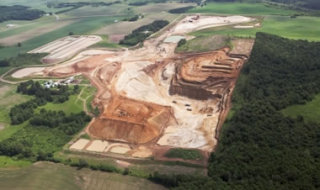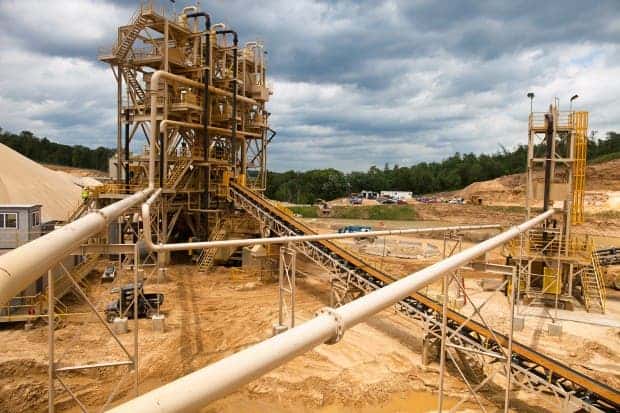Hydraulic fracking is one of the hottest topics right now – and while proposers and defenders of the method argue that everything is safe and there is no need to worry, the facts seem to only agree with them sometimes. Even if all the rules and regulations are followed, there would be some controversy; but the thing is, rules are often broken. A new study has shown that almost half of all hydraulic fracking in sands violated environmental rules.

The figures are extremely worrying; it’s not just a few companies being reckless, it’s a general trend. Bobby King, an organizer who contributed to the report by the Land Stewardship Project, an advocacy group says that breaking laws is happening all the time in the business.
“It’s an industry that’s willing to routinely violate rules that are designed to protect communities, protect air quality, protect water quality,” he said.
Wisconsin is a very interesting example for this type of study. The state is the biggest silica producer in the US. Silica is extracted mostly from sand, and it is a key ingredient used in fracking. There are currently 135 active mines, processing and transport facilities up from only seven facilities in 2010.
The bloom of fracking has led to a boom in silica extraction, and the state enjoyed a major economic growth, with thousands of new jobs and a new, thriving industry. However, there have also been negative results. People are becoming increasingly concerned about the potential negative impact that fracking has on the environment, and ultimately, on their health. Many argue that rules and regulations are minimal, and enforcement is practically non existent. This study seems to back that up.
The report, which was released on Nov. 6, exposed some of the industry’s dirty laundry… and it’s really dirty. During 2012 and 2013, the period which witnessed the greatest growth of the industry, the Land Stewardship Project, a Minnesota-based nonprofit, compiled every instance in which Wisconsin’s Department of Natural Resources (DNR) took “substantial regulatory action” to get companies that mine or process sand to stop breaking the rules. What they found is that out of the 47 frac sand companies in the state, 20 have been cited for severe violations. The most common violations include improperly stored sand or waste from mining or processing that leaked during storm events, sometimes into streams and creeks. This is what is called a stage 2 violation.

Whenever there is a violation, the DNR sends the company a letter asking them to fix the issue until a certain date; this is called a stage 1 violation. If the problem is not fixed, they send another letter, along with an invitation for a meeting to discuss a plan of action. This is a stage 2 violation. If a solution is still not applied, then the DNR moves onto a stage 3 violation, which typically involves a fine. The agency issued these citations to 13 companies, or nearly 30 percent of the industry. Fines could be as low as a few hundred dollars. The highest fine is $200,000. The general result was pretty clear – the violation and fining system is grossly ineffective.
Basically, companies have done the math. They figured out that it’s cheaper to not solve the problem and pay the fine… or just wait it off. To make things even more ineffective, Patricia Popple, a frac sand activist in Chippewa Falls, says officials mostly take action only when there is a civil complaint – so many violations remain unsanctioned.
The results are clear – there is a huge environmental problem with frac sand companies – and the problem likely expands way beyond just them. There is a system to sanction them for potential violations, but the system is ineffective, and too mellow. If we want to limit the environmental impact of fracking as much as possible, we have to change the system and ensure a more severe punishment for those breaking the law – in Wisconsin, and in the US.


